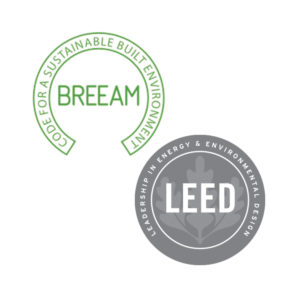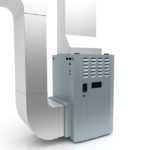
A green certification program called BREEAM was recently introduced in the U.S. If you’re a HVAC installer in North America, get to know the program, as chances are you’ll encounter a project seeking BREEAM certification. This building endorsement requires careful design of the HVAC system as well as the use of top grade equipment, from energy-efficient furnaces to leak-free fittings and vents.
BREEAM, which stands for Building Research Establishment Environmental Assessment Method, was developed in the UK to help building owners and operators adopt sustainable practices. While BREEAM is new to the U.S., it was established in 1990, making it the oldest green building evaluation system around.
BREEAM compared to LEED
How is BREEAM different from LEED (Leadership in Energy and Environmental Design)? Well, particularly since the recent updates to both programs, they have many similarities but they take different approaches to achieve similar goals.
Both BREEAM and LEED emphasize energy efficiency, which means HVAC design and operational efficiency is vital to the certification process. According to Javad Khazi, author of Energy Efficient HVAC Design: An Essential Guide for Sustainable building, HVAC is a critical element in both LEED and BREEAM certification.
The main difference between these two programs is in the process. With LEED, the design team collects all the evidence for certification. BREEAM certification is handled by a third party licensed assessor. BREEAM is more prescriptive – offering preset levels of energy efficiency – and LEED is more subjective.
This suggests that LEED certification is easier, given that the design team collects the evidence, but, in fact, this program can be more costly. Design teams can spend a lot of time and resources proving that a project is efficient, whereas, with BREEAM, project managers are supplied with a benchmark and can design accordingly.
And then there are the basic geographical differences. LEED is derived from ASHRAE standards and BREEAM from UK and European standards. Obviously, North American HVAC installers are going to be more familiar with LEED, but upscale projects seeking international investment may prefer the market appeal of rigorous BREEAM standards.
The good news for you is that buildings that score high with LEED generally also receive high BREEAM ratings. And, since HVAC is of great importance to both systems, the HVAC installer who delivers high ratings will be in high demand.
What is a Good Green Score?
BREEAM certification comes in the form of a qualitative rating:
Pass: the building gets at least 30% of available credits
Good: the building gets at least 45% of credits
Very Good: the building gets at least 55% of credits
Excellent: the building gets at least 70% of credits
Outstanding: the building gets at least 85% of credits
LEED certification offers projects 110 possible points and awards these ratings:
Silver: 50 of 110 points
Gold: 60 of 110 points
Platinum: 80 of 110 points
The BREEAM Niche
While it’s unlikely that BREEAM will replace LEED, it might find a niche in North America. Brought to the U.S. by BuildingWise, a LEED certification consultancy, the firm plans to use the BREEAM In-Use Standards to certify the 5.6 million commercial buildings currently not measuring their efforts. There is LEED certification for in-use buildings, but it’s expensive.
The BREEAM In-Use Standard features an online tool that building managers and owners can use on their own. They load all of their building features to get an unverified rating. This registration is open for a year. During this time building operators can have their rating verified by a third-party assessment firm. This affordable process makes BREEAM a good option for smaller buildings.
Whether you’re involved with building to LEED standards or might be in the near future, you’ll benefit immensely from learning about BREEAM and energy efficiency. For every project, use HVAC fittings and vents designed to the highest possible standards.



